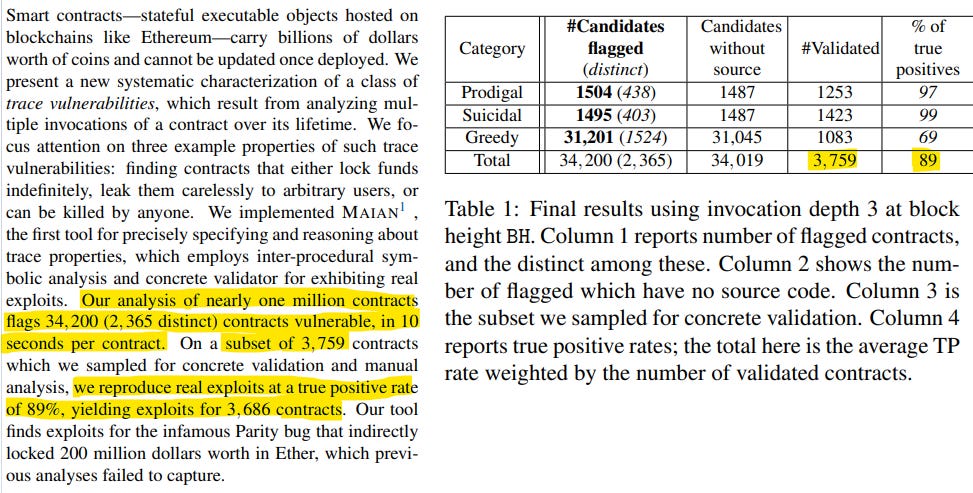Insightful newsletter of Drishtikone: Issue #245 - Pseudologia Fantastica
A sane mind's battle has to be for the Truth. Anything short is entertainment or delusion. It requires ruthless intensity and a sharp discretionary sense. Both, to this world and to Inner self.
Image by giulianabencovich from Pixabay \ The sacred Mount Kailash
Kailash is a mountain of knowledge and knowing in Grace. In terms of inner dimensions, everything that you ever want to know about your own creation, existence, and liberation are there in Kailash. If one is willing to raise one’s perception to sufficient clarity, one can delve into this infinite library. - Sadhguru
“It is true, O Rama, that the study of the scriptures is not the cause for the attainment of self-knowledge. Scriptures are composed of diverse expressions; the supreme being is indescribable,” explained Rishi Vashisht to Shri Ram, as the 16-year-old seeker sat at his Guru’s feet for his journey to enlightenment.
The Guru then goes on to say that the realization of Brahman is beyond description. That is why it cannot be found in the teachings of scriptures. However, he says that the precepts of scriptures and their practice create conditions for a sattvic or pure mind, which Rishi Vashist still calls “satvika part of ignorance.”
Sattvik is the purity of mind, but within the realm of spiritual ignorance nevertheless. Tamasik is the dull part of ignorance. Sattvik destroys that. In that action of moving from the dull side of ignorance to ignorance harbored by a pure mind, one is readied to move on to the spiritual path. A path that will eventually take one to the complete realization.
A spiritual path in the Dharmic traditions, therefore, has always been more than just scriptures. For scriptures have a limitation - the curse of interpretation. By the mind that reads it.
You see, no book is ever greater than the reader. Reader’s interpretation is what any writer’s work becomes.
What Shri Ram attained to in his life was far beyond scriptures. His name, his energy, and his life left an imprint on the ether and the planet that we breathe in and walk upon. His presence, if tapped into, has the ability to transform life energies. When Nanak sang “टेक एक रघुनाथ” (Ram is the only support) (listen here) that was exactly the dimension that he was referring to.
The world of today is being interpreted by minds that are not just ignorant. But vile.
They have no remorse nor guilt. They will readily fabricate lies backed by their own conscience. Or so they think. It is up to each one of us to seek the truth. At least intensify the effort to do so. Wading through the murky waters of falsehoods.
We humbly want to thank Parthoji for his generous contribution to Drishtikone. Very thankful to you sir. 🙏
a man murdered and dehumanized
25-30 people armed with sticks and mad with anger attacked the Sharma residence. They were part of the local Muslim gang who were mad at Rinku for working on collecting money for the Ram Temple at Ayodhya. The attackers were led by 5 people - Zahid, Mehtab, Tasuddin, Nasruddin, and Mohammed Islam.
The leftist media is busy restructuring the story by spinning the whole story. In fact, ThePrint, known to promote fake stories (MoH called out one, Russian Ambassador called out another, ThePrint editor Shivam Vij’s fake story on Kashmiri Pandits called out by Aajtak anchor and son of the man whose quote that was never given was cited) is trying to spin another web of lies is their best practice.
Its columnist Bismee Taskin claims that the knife with which Rinku was stabbed was his own and there was - obviously! - “no communal angle” to the murder. Which, of course, right as per the long-standing practice of ThePrint, was “backed by the victim’s mother.” (Source)
In psychiatry, this affliction is termed pseudologia fantastica.
However, pseudologia fantastica is characterized by the creation of eloquent and interesting stories, sometimes bordering on the fantastic, that are told to impress others. These stories may seem to be just on the verge of believability and often involve the patient assuming important and heroic roles. Patients react to questions or doubts with ad hoc elaborations in order to satisfy the listener. Thus, new lies are needed to supplement the old, and patients sometimes start to believe their own deceptions. Detection of pathological lying and differential diagnosis are, not surprisingly, quite difficult, and require modifications to standard assessment procedures. (Source)
Indian Express, another repeated fake news offender (Fake story of Prasar Bharati firing its employees and segregation of COVID patients in Ahmedabad by religion - Source) made up the story of “both sides owning a restaurant business.
“Prima facie, the men fought over food business that both sides used to run. The accused and victim owned eateries which later had to be shut because they ran into losses. We have conveyed this to the family but there is tension in the area. As a preventive measure, we deployed forces.” (Source)
Rinku’s brother has said categorically that the business-related disputes are incorrect and Rinku was a lab-technician and not working or owning a restaurant.
“The media reports, which are suggesting that Rinku Sharma’s death was due to birthday party and business-related disputes, are baseless. We don’t own any business. My deceased elder brother Rinku Sharma was a lab technician at the Balaji Medical Hospital. The story about the business dispute is false. I am requesting the media portals to stop spreading rumours about the incident,” he informed. (Source)
The large mob that attacked Rinku’s family was driven to finish the family of that day. They tried to take the gas cylinder from the Sharma kitchen to set the house on fire.
It is now being reported that the murderers of the Rinku Sharma had reportedly tried to burn his whole family. According to Jagran, Rinku’s mother Radha alleged that the Muslim mob that hacked her son to death barged into their house and tried to set ablaze the gas cylinder kept in the kitchen. (Source)
When the family was taking Rinku to the hospital they were pursued there as well.
“We were chased on our way to the hospital. When we were trying to prise out the knife from Rinku’s back, the attackers attacked him yet again. Tasuddin was the main accused. He was the one who led the attack on us at the hospital and tried to block us from getting Rinku urgent medical attention,” (Source)
Those who are making Rinku out to be a villain and thus suggesting in their own cunning and twisted way that he may have deserved his death, fail to mention that Rinku had donated his own blood for the attacker’s wife when she was in a critical condition during her pregnancy. Not once but twice!
As per the report, Rinku donated his blood to the wife of one of the attackers who killed him. The woman was pregnant one and a half years ago and was in a critical condition. Blood was needed for treatment. In such a situation, Rinku gave his blood, not once but twice, for the accused’s wife. (Source)
Just because some people have access to media outlets, they can and do spin stories and make fantastic claims which are done to (1) dehumanize Hindu victims and (2) obfuscate crimes committed against them.
The whole trade of fakery is so open and common that they do so without any remorse or guilt. It is almost as if the pathological liars that they are, have totally lost complete access to the moral compass.
It is time to create a different reporting system. A system of citizen journalism where the fake stories are bared for what they are - falsehoods.
battle for the next financial power
In our last issue (Issue #244 - Distributed Future), we had discussed the criticality of the next generation finance in national security and what would be its components. We had said:
An indigenous block-chain platform powering a Digital Rupee, a sovereign cryptocurrency, which would enable a payment system based on UPI as the payment rail. Even UPI can in the future be block-chain based as well. This entire combination could be the greatest leap forward in the world of finance and economics!
That Indian government has been working on digital rupee as well as a blockchain system named Vajra is very significant. The main currency of choice for the future will be the one that is stable, backed by a strong sovereign, and has a reliable underlying architecture.
We had discussed Ethereum in our newsletter. But is Ethereum hackproof? Are blockchains hackproof?
Apparently not.
In a report titled “Finding The Greedy, Prodigal, and Suicidal Contracts at Scale," five researchers from the U.K. and Singapore have discussed the various vulnerabilities in the Ethereum contracts. They categorized the Smart Contracts into three types:
greedy, prodigal, and suicidal — which either lock funds indefinitely, leak them to arbitrary users, or be susceptible to be killed by any user (Source)
Their conclusions were indeed shocking!
A 2019 MIT Review article discusses how billions had already been stolen from the blockchain exchanges since 2017 by then.
In total, hackers have stolen nearly $2 billion worth of cryptocurrency since the beginning of 2017, mostly from exchanges, and that’s just what has been revealed publicly. These are not just opportunistic lone attackers, either. Sophisticated cybercrime organizations are now doing it too: analytics firm Chainalysis recently said that just two groups, both of which are apparently still active, may have stolen a combined $1 billion from exchanges. (Source)
Yes, encryption is a great way to ensure that networks are not easily hackable, but the world of encryption is a murky one.
Since World War II, one Swiss company Crypto AG was the provider of encryption devices for many governments. It sold equipment to over 120 countries around the world. Including India.
Its clients included Iran, military juntas in Latin America, nuclear rivals India and Pakistan, and even the Vatican. (Source)
What no one knew was that this company was owned by the CIA in a partnership with the West German intelligence. They had rigged all the devices to easily break the codes that Crypto AG’s customers used to send secret encrypted messages.
It was really an open door for the CIA.
Any bet this may not repeat in the new world?
So India’s strategy of using its own blockchain network to create the digital rupee, while it expands its payment rail - UPI (NPCI launches international unit to expand reach of UPI) is a rather great way to create a stable and secure financial machine.
Meanwhile, China is betting on creating and expanding its own Digital Currency - Yuan.
China’s central bank has partnered with SWIFT, the European-based global system for financial messaging and cross-border payments, to set up a joint venture — a move that observers say shows China’s ambitions to take the digital version of its currency, the yuan, global. (Source)
SWIFT is the mechanism for international payment transfers globally. This will be a joint venture between China’s Central Bank and SWIFT.
The new entity, Finance Gateway Information Services Co., was established in Beijing in mid-January with registered capital of $12 million, and its business scope includes information system integration, data processing and tech consultancy, according to China’s National Enterprise Credit Information Public System. SWIFT, the Society for Worldwide Interbank Financial Telecommunication, owns a 55% stake in the venture, while the remaining 45% is co-owned by four institutions under China’s central bank, including the China National Clearing Center, Cross-Border Interbank Payment System (CIPS) and its digital currency research institute. (Source)
UPI is certainly not SWIFT in terms of reach. Yet. But if the NPCI can package and sell its product and rails well, it can be the golden standard for most of the world fairly quickly.
Also please read this McKinsey report on “A vision for the future of cross-border payments” - you can download the pdf from the link.
market corner: 10 quick bytes
Bitcoin bombshell: Crypto bellwether’s m-cap nears $1T; higher than combined m-cap of Visa, JPMorgan - more
Paddy procurement has increased 16 percent so far this Kharif marketing season at 638.57 lakh tonne, valued at Rs 1,20,562 crore, amid ongoing farmers' protest at borders of the national capital - more
India's COVID-19 recovery rate at 97.31%, among highest in the world - more
Nirmala Sitharaman said that while an Inter-Ministerial Committee will study the issues and launch a new crypto bill, all private cryptocurrencies, except any virtual currencies issued by the government, will be prohibited in India - more
Morgan Stanley may bet on Bitcoin in $150 billion investment arm - more
Government to set up 2,500 Farmer Producer Organisations; set to cost Rs 700 crore - more
Amazon adds the Marathi language for MSME sellers weeks after alleged MNS workers vandalized company godowns - more
Tonbo bags multi-million-dollar deal for indigenising Indian missiles - more
Finance Ministry to infuse Rs 3,000 cr in general insurance companies this quarter - more
Snapchat crosses 60 million users milestone in India, clocks over 150% growth in DAUs - more
nota bene
Over 67% of jailed are Hindus: Over 67 percent of the 4,78,600 prison inmates in the country are Hindu while nearly 18 percent Muslim, according to Union Ministry of Home Affairs (MHA) data. The prison statistics presented by the Minister of State for Home Affairs G Kishan Reddy last week in Parliament were based on a compilation of data by the National Crime Records Bureau (NCRB) updated till December 31, 2019. The data showed that 3,21,155 (or 67.10 percent) prison inmates were Hindu, 85,307 (or 17.82 percent) Muslim, 18,001 (or 3.76 percent) Sikh, 13,782 (or 2.87 percent) Christian, and 3,557 (or 0.74 percent) 'others'. A gender-wise break-up of the figures showed that among women, 13,416 prison inmates were Hindus, 3,162 Muslim, 721 Sikh, 784 Christian, and 261 'Others'. Among the states and Union Territories, Uttar Pradesh had the largest number of Hindu and Muslim prison inmates at 72,512 and 27,459, respectively. (Source)
Rick-driver’s daughter is Miss India Runner up: Manya Singh was crowned runner-up of the VLCC Femina Miss India 2020 last week. Manya is the daughter of a rickshaw driver from Uttar Pradesh. Manya, who was born in Kushinagar, said in her post that she grew up in tough circumstances, spending nights without food or sleep and walking miles just to save a few rupees. She yearned for books and clothes that were not hand-me-downs, but luck, she says, was never in her favor. (Source)
Toolkit mastermind caught: The Delhi Police said on Sunday Bengaluru-based climate activist Disha Ravi had shared the Google “toolkit” document with Sweden’s Greta Thunberg, news agency ANI reported. Ravi was arrested earlier in the day in connection with the Thunberg protest "toolkit" case and was remanded to five-day custody of Delhi Police's special cell. She started a WhatsApp group and collaborated to make the Toolkit doc. She worked closely with them to draft the document," Delhi Police said shortly after securing Disha's remand. (Source)
Confusion on Taliban killer: Conflicting reports emerged on Sunday about the fate of Afghan Taliban leader Haibatullah Akhundzada, with a section of the Afghan media reporting that he was killed in a blast in Pakistan’s Balochistan province last year. However, senior Taliban leader Ahmadullah Wasiq described the reports of Akhundzada’s death as “false news and baseless rumors” and contended the Taliban chief was alive. (Source)
Inflict pain on Apple: Facebook was embroiled in controversy over its data-collection practices. Mr. Cook piled on in a national television interview, saying his own company would never have found itself in such a jam. Mr. Zuckerberg shot back that Mr. Cook’s comments were “extremely glib” and “not at all aligned with the truth.” In private, Mr. Zuckerberg was even harsher. “We need to inflict pain,” he told his team, for treating the company so poorly, according to people familiar with the exchange. (Source)
5000-year-old brewery: Archaeologists have discovered a 5,000-year-old brewery that could produce thousands of liters of beer in the ancient Egyptian city of Abydos, Egypt's tourism and antiquities ministry said. The site in Egypt's Sohag Governorate likely dates back to the reign of King Narmer around 3,100 BC. Dr. Matthew Adams, one of the leaders of the Egyptian-American mission that made the discovery, said they believe the beer was used in royal burial rituals for Egypt's earliest kings. The brewery, which had a production capacity of 22,400 liters, was split into eight sections each containing 40 clay pots used to warm mixtures of grain and water. (Source)
Talk to Animals via AI: Talking to animals, in the way Dr Dolittle did, might seem more like an appropriate subject matter for a family film than serious scientific research. But Professor Michael Bronstein at Imperial College London says that Artificial Intelligence could provide the key to unlocking completely alien languages – such as the complex songs of whales. (Source)
video corner: A Nuclear Kodak Moment
The US nuclear tests were called the Trinity nuclear tests. They were carried out in 1945. The first being on July 16, 1945. Just three weeks later the atomic bomb exploded on Japan.
When these tests were conducted in New Mexico, not many people had understood its significance or what had happened. In Alamogordo, New Mexico, for example, there was just a small news item pointing to what had happened.
But it was the Kodak research team which had figured out the tests without witnessing them. They did it through a supply chain problem they were resolving for an issue that would mess up their photographic films. So when they went about addressing the problem, they found how it could have been the consequence of a nuclear explosion.
Watch this to find out. Amazing story.
Today’s ONLINE PAPER: Check out today’s “The Drishtikone Daily” edition. - THE DRISHTIKONE DAILY
SUPPORT DRISHTIKONE: If you consider our work important and enriching and would like to contribute to our expenses, please click on the button below to go to the page to send in your contribution. You can select the currency (for example, INR or USD, etc) and the amount you would like to contribute. Contribute to Drishtikone
If you like this post - please share it with someone who will appreciate the information shared in this edition
If you like our newsletter, please share it with your friends and family







